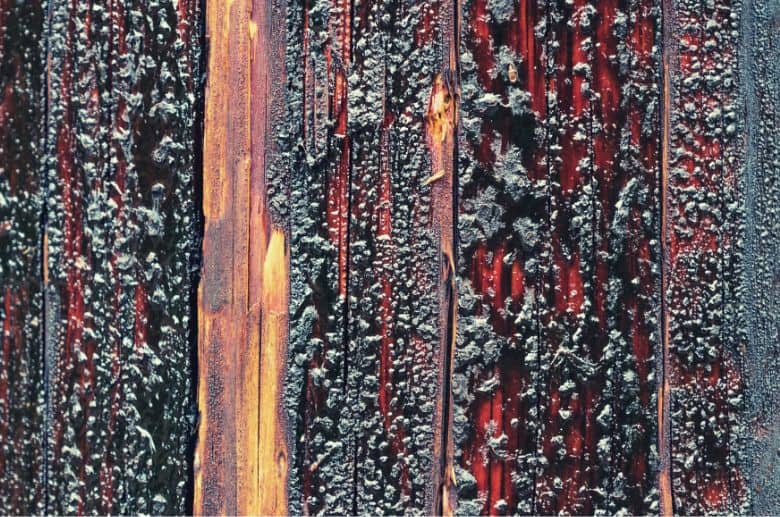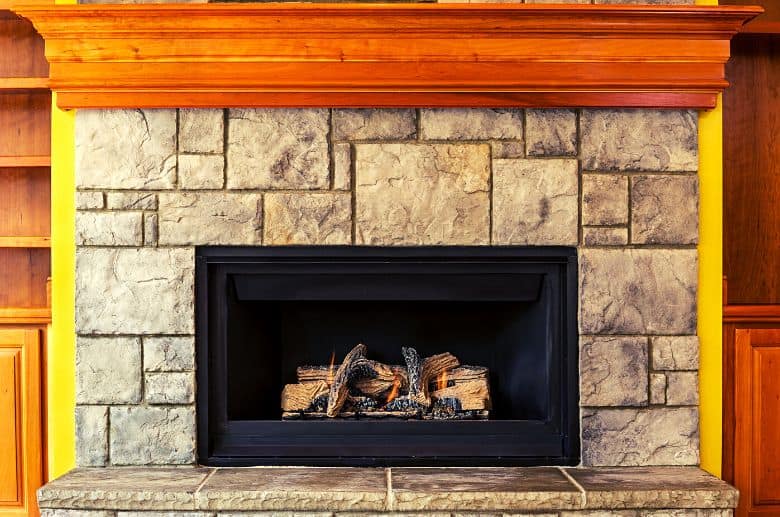Knowing the warning signs of stage 3 creosote buildup in your chimney is extremely important, and ignoring the signs can result in a devastating house fire.
Creosote is a black, tarry substance produced when wood or other fuel burns in a fireplace, stovetop, or furnace. It can build up inside your chimney and pose a severe fire hazard.
You could risk your home and family if you are unaware of the warning signs of stage 3 creosote buildup. But don’t panic. We’re here to help!
This article will discuss the warning signs of stage 3 creosote buildup and how to prevent it.
What is Stage 3 Creosote?
There are three stages to creosote buildup in a chimney: stage 1, stage 2, and stage 3. Stage 3 creosote is the most severe form of creosote buildup. It is a black or brown substance that is shiny and hard to the touch, and it can be crusty or flaky and easily catch fire.
Stage 1 Creosote
Stage 1 creosote is a light layer of soot that has just started accumulating on your chimney’s walls. This stage is not yet causing concern and can be removed with a suitable chimney cleaning.
Stage 2 Creosote
Stage 2 creosote is a thicker layer of soot that has started to build up on the walls of your chimney. This stage is cause for some concern, as it can be more challenging to remove, and the risk of a chimney fire is increasing at this stage. A professional chimney sweep should remove stage 2 creosote.
Stage 3 Creosote
The highest degree of creosote buildup is known as stage 3 creosote. It’s black or brown, high-sheen, and firm material. Creosote may also be crumbly or flaky, and it easily ignites.
Stage 3 creosote is caused by combustion gases that cool too quickly in the chimney. When they cool, these gases condense and form a sticky substance on the chimney’s walls. The more you use your fireplace, the more likely you will get stage 3 creosote buildup.
If you have stage 3 creosote in your chimney, removing it as soon as possible is crucial. Creosote removal should be done by a professional.
——
Do You Need to Hire Chimney & Fireplace Expert?
Get free quotes from qualified experts near you. No commitment required!
——
Signs of a Chimney Blocked With Level 3 Creosote

A chimney blocked with stage 3 creosote is a severe fire hazard. If you suspect that your chimney is blocked with stage 3 creosote, it’s essential to have it inspected by a professional as soon as possible.
There are a few telltale signs that indicate a stage 3 creosote blockage. For instance, one of the most common signs is you may notice that your fireplace doesn’t draw as well as it used to.
Other signs to watch out for include the following:
- There is a strong smell of smoke coming from your fireplace.
- The smoke from your fireplace is not clearing as quickly as it used to.
- You can see soot or creosote inside your chimney.
- You have difficulty starting a fire in your fireplace.
- Visible creosote buildup in and around your fireplace.
If you notice any of these signs, it’s essential to have your chimney inspected and cleaned by a professional. Ignoring a blocked chimney can be extremely dangerous and put your home at risk for a fire.
Dangers of 3rd Degree Creosote Buildup
3rd-degree creosote buildup is hazardous and can easily cause chimney fires, just as explained earlier. But what are the risks of having this creosote buildup?
Let’s take a look:
- Hardest to Remove: 3rd-degree creosote is the hardest to remove once it’s building up in your chimney, and this is because the only way to get rid of it is to break it down first by chemical treatment, then scrape it away, which can be difficult and time-consuming. It’s the main reason you need a professional to help you eliminate it.
- Increased Risk of Chimney Fires: As we mentioned, 3rd-degree creosote buildup is one of the leading causes of chimney fires. This is because the creosote is highly flammable and can easily ignite if a spark or ember is present.
- Creates Dangerous Gasses: Another danger of 3rd-degree creosote buildup is that it can make breathing difficult. This is because the creosote can release harmful chemicals and fumes into the air, harming your health. When 3rd-degree creosote burns, it emits dangerous gases such as carbon monoxide that can harm your health.
As you can see, 3rd-degree creosote buildup is hazardous and should be removed immediately. If you believe you have this type of creosote buildup, it’s essential to contact a professional chimney sweep who can help you remove it safely.
Don’t try to remove it yourself, as you could end up causing more damage to your chimney and putting yourself at risk.
——
Do You Need to Hire Chimney & Fireplace Expert?
Get free quotes from qualified experts near you. No commitment required!
——
How to Prevent Stage 3 Creosote From Forming in the Future
Suppose you’ve had professionals inspect, clean, and remove any existing stage 3 creosote buildup in your chimney. Great, right? But how can you make sure it doesn’t come back?
Here are some tips:
1. Clean Your Chimney on an annual basis
No matter what type of fuel you burn in your fireplace or stove, it’s essential to have your chimney cleaned at least once a year by a certified chimney sweep.
The National Fire Protection Association (NFPA) recommends an annual chimney inspection because buildup can occur even with regular cleaning.
2. Use Dry and Seasoned Firewood

Dry seasoned firewood is critical to preventing creosote buildup. Seasoned wood has been cut and split for at least six months, allowing the moisture to evaporate. The firewood should be no more than 20% moisture.
If you can’t tell if your wood is seasoned, split a piece in half – if the center is dark brown or black, it’s ready to burn. If it’s still green, give it more time to season.
Unlike wet firewood, seasoned firewood burns hot and slow, producing less smoke. That means there’s less opportunity for creosote to form on the walls of your chimney.
3. Consider Getting Your Chimney Lined
If your chimney is in good condition, you may consider getting it lined. A flue liner can help to protect your chimney from the corrosive effects of creosote and can also make it easier to clean.
Moreover, a liner can help extend your chimney’s life because it protects bricks and mortar from the heat of the fire.
4. Build Hot Fires with Good Airflow
Building a hot fire is another way to prevent creosote buildup. A hot fire burns at a high temperature and produces less smoke than a slow-burning fire, meaning there’s less opportunity for creosote to form on the walls of your chimney.
To build a hot fire, start with dry, seasoned wood. Then, use kindling and small logs to build a fire big enough for a few hours. Don’t use too much wood at once; make sure there’s good airflow by opening the damper and using a fire screen.
5. Use a Fireplace Insert

A fireplace insert is one of the best ways to prevent stage 3 creosote from forming in your fireplace. A fireplace insert is a metal box with a glass door that fits inside your fireplace. The insert will prevent most of the smoke from going up the chimney, reducing the amount of creosote that forms.
Moreover, the glass door will allow you to see the fire, which means you can prevent it from getting too hot. A hot fire is one of the leading causes of stage 3 creosote formation, so keeping the fire under control is an excellent way to prevent this problem.
When you implement these tips, you can help prevent stage 3 creosote from forming in your chimney. As always, consult a professional with any questions or concerns about your fireplace or stove.
Stage 3 Creosote Removal Cost
Generally, you can expect to pay between $500 to $5,000 for a professional to inspect, clean, and remove stage 3 creosote from your chimney. The cost will depend on the size and condition of your chimney and the company you hire.
If you have stage 3 creosote in your chimney, it’s essential to contact a professional chimney sweep to have it removed. Removing it yourself could cause more damage to your chimney or put you at risk of injury.
Stage 3 creosote removal is messy and technical, so it’s best left to the professionals.
Conclusion
Stage 3 creosote is a highly flammable substance that can cause devastating fires in your home.
It’s essential to recognize the warning signs of creosote buildup and take action to clean it up before it becomes a problem. Ignoring these warning signs could lead to disaster.
Therefore, consult a professional chimney sweep service to inspect, diagnose, and determine the best way forward for your chimney.






